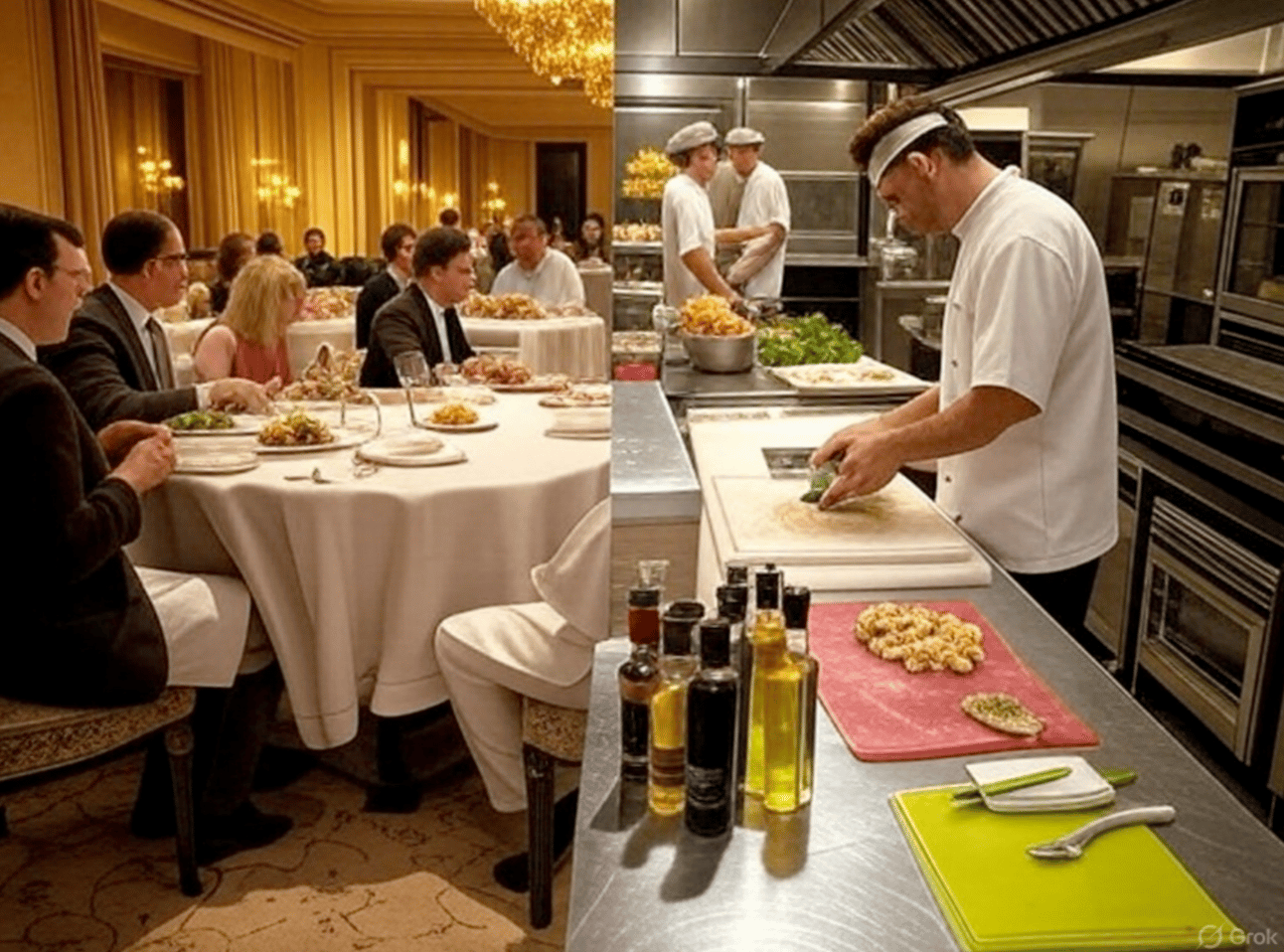- Agnes' Newsletter
- Posts
- The Hidden Truth Behind Restaurants: A Chef’s Perspective on Health and Practices in Top Restaurants
The Hidden Truth Behind Restaurants: A Chef’s Perspective on Health and Practices in Top Restaurants
Peek Behind the Plate: Why Asking Questions at Restaurants Matters for Your Health

For the past five years, I’ve worked as a chef in some of the most prestigious restaurants, where guests pay top dollar for an unforgettable dining experience. The ambiance is impeccable, the plates are works of art, and the flavors linger long after the meal. But behind the kitchen doors, I’ve seen a troubling reality: the health of our guests is often not a priority. From seed oils to subpar cookware, plastic cutting boards, and questionable kitchen practices like oil recycling, the restaurant industry has some practices that don’t align with the premium prices guests pay. After years of witnessing this disconnect, I’ve decided to forge a new path—one where food is treated as medicine.
The Allure of Dining
When diners enter a high-end restaurant, they’re not just paying for food—they’re investing in an experience. The steep price tag promises top-tier ingredients, culinary expertise, and a night to remember. As chefs, we dedicate ourselves to delivering on that promise, crafting dishes that dazzle the senses. But while the dining room exudes luxury, the kitchen often prioritizes cost and efficiency over health. It’s a truth that’s hard to reconcile once you’ve seen it firsthand.
Seed Oils: A Costly Compromise
One of the biggest issues in restaurant kitchens is the reliance on seed oils—canola, soybean, or generic “vegetable” oil. These oils are cheap, versatile, and have a high smoke point, making them a staple for frying, sautéing, and dressings. But they’re highly processed and loaded with omega-6 fatty acids, which can promote inflammation when overconsumed. In the restaurants I worked in, seed oils were the default, while healthier options like olive oil or butter were used sparingly due to cost. For guests paying a premium, this feels like a breach of trust.
The tools we use in the kitchen are just as critical as the ingredients, yet many restaurants cut corners here too. Nonstick pans, often coated with chemicals like PFAS, are common for their ease of use, but they can release harmful substances when overheated. Safer alternatives like stainless steel or cast iron are less common because they demand more skill and upkeep. Similarly, plastic cutting boards dominate many kitchens due to their low cost and ease of cleaning, but they can harbor bacteria and release microplastics into food. Wooden boards, which are naturally antimicrobial, are often dismissed as impractical. These choices undermine the care guests expect from a high-end meal.
Kitchen Practices: Prioritizing Profit
Beyond tools and ingredients, certain kitchen practices raise red flags. Oil recycling is a common cost-saving measure, where cooking oil is filtered and reused multiple times. While this might seem resourceful, reused oil degrades, forming harmful compounds like trans fats. Cross-contamination is another concern—during a hectic service, surfaces and utensils may not be properly sanitized between tasks, posing risks to guests with allergies or sensitivities. These issues often stem from understaffing and the relentless pace of a busy kitchen, but they compromise the health of diners who deserve better.
Why Health Takes a Backseat
So why do these practices persist in restaurants charging exorbitant prices? It’s a mix of economics and tradition. Restaurants operate on razor-thin margins, so owners prioritize cost-cutting measures to stay afloat. Health-conscious choices—like premium oils, high-quality cookware, or rigorous sanitation protocols—require investment and time, which can eat into profits. Meanwhile, the industry’s focus on flavor, speed, and presentation often overshadows the long-term health implications of kitchen practices. Diners, captivated by the experience, rarely question what’s happening behind the scenes.
A Call for Change
As a chef, I believe restaurant dining can and should evolve. Some restaurants are starting to embrace healthier practices, like using high-quality oils or transparent sourcing. But real change requires effort from chefs, owners, and diners. As a guest, you can ask about the oils used, the sourcing of ingredients, or how allergies are handled. Your questions signal that health matters. Support establishments that prioritize quality, and advocate for a dining culture that values well-being as much as indulgence.
Agnes Kitchen: A New Approach
After years of navigating these challenges, I’ve decided to take a stand. Hence, I have started Agnes Kitchen. Though we are a small, home-based operation, we strive to focus on food as medicine, as the Stoics might have said. We ensure the use of high-quality ingredients, cookware, and even dish soap. Being small and home-based gives us the advantage to focus on these aspects, allowing us to prioritize health without the pressures of a large-scale restaurant. Every dish we create is a step toward redefining dining as an act of care—for both the body and the soul.